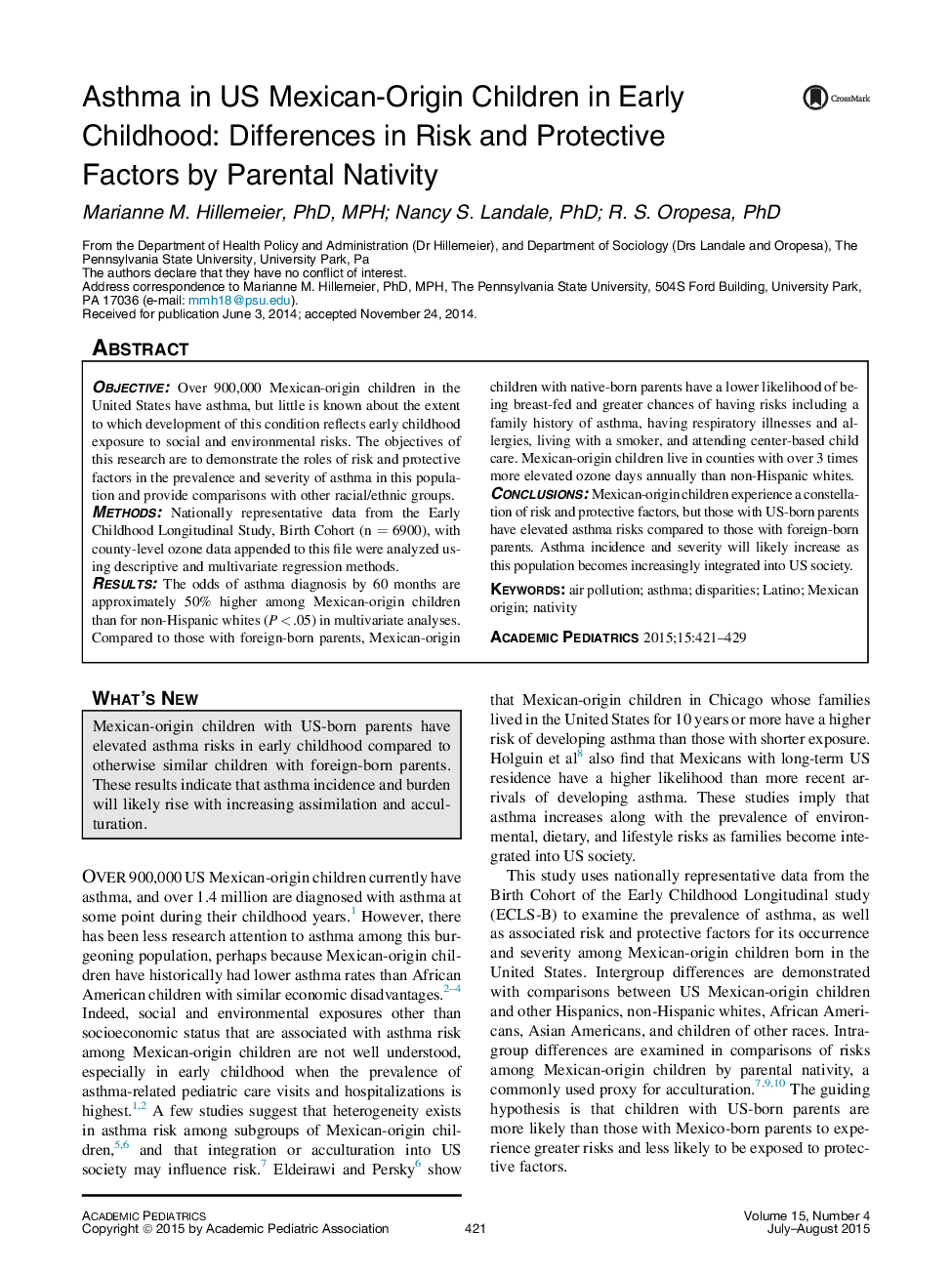| Article ID | Journal | Published Year | Pages | File Type |
|---|---|---|---|---|
| 4139063 | Academic Pediatrics | 2015 | 9 Pages |
ObjectiveOver 900,000 Mexican-origin children in the United States have asthma, but little is known about the extent to which development of this condition reflects early childhood exposure to social and environmental risks. The objectives of this research are to demonstrate the roles of risk and protective factors in the prevalence and severity of asthma in this population and provide comparisons with other racial/ethnic groups.MethodsNationally representative data from the Early Childhood Longitudinal Study, Birth Cohort (n = 6900), with county-level ozone data appended to this file were analyzed using descriptive and multivariate regression methods.ResultsThe odds of asthma diagnosis by 60 months are approximately 50% higher among Mexican-origin children than for non-Hispanic whites (P < .05) in multivariate analyses. Compared to those with foreign-born parents, Mexican-origin children with native-born parents have a lower likelihood of being breast-fed and greater chances of having risks including a family history of asthma, having respiratory illnesses and allergies, living with a smoker, and attending center-based child care. Mexican-origin children live in counties with over 3 times more elevated ozone days annually than non-Hispanic whites.ConclusionsMexican-origin children experience a constellation of risk and protective factors, but those with US-born parents have elevated asthma risks compared to those with foreign-born parents. Asthma incidence and severity will likely increase as this population becomes increasingly integrated into US society.
